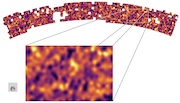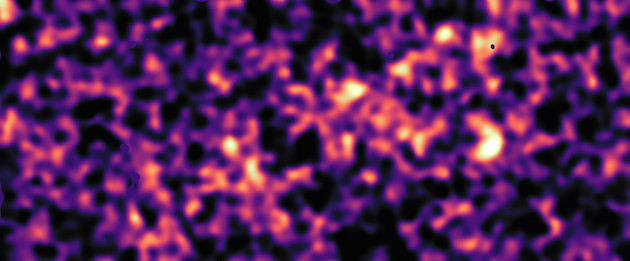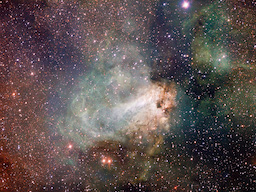Press releases
New KiDS Result: The Universe Is More Homogeneous Than Expected
July 31st, 2020

New results from the Kilo-Degree Survey (KiDS) show that the universe is nearly 10 percent more homogeneous than the Standard Model of Cosmology (Λ-CDM) predicts. The latest KiDS map was made with the OmegaCAM on ESO's VLT Survey Telescope at Cerro Paranal in Northern Chile. A group of astronomers led from institutes in the Netherlands, Scotland, England and Germany have described the KiDS-1000 result in five articles, the last three of which appeared online today.
Read moreDark Matter May be Smoother than Expected
December 7th, 2016

Analysis of a giant new galaxy survey, made with ESO's VLT Survey Telescope in Chile, suggests that dark matter may be less dense and more smoothly distributed throughout space than previously thought. An international team used data from the Kilo Degree Survey (KiDS) to study how the light from about 15 million distant galaxies was affected by the gravitational influence of matter on the largest scales in the Universe. The results appear to be in disagreement with earlier results from the Planck satellite.
Read moreHuge new survey to shine light on dark matter
July 9th, 2015

The first results have been released from a major new dark matter survey of the southern skies using ESO's VLT Survey Telescope (VST) at the Paranal Observatory in Chile. The VST KiDS survey will allow astronomers to make precise measurements of dark matter, dark energy, the structure of galaxy halos, and the evolution of galaxies and clusters. The first KiDS results show how the characteristics of the observed galaxies are determined by the invisible vast clumps of dark matter surrounding them.
Read moreFirst images from the VLT Survey Telescope
June 8th, 2011

The VLT Survey Telescope (VST), the latest addition to ESO's Paranal Observatory, has made its first release of impressive images of the southern sky. The VST is a state-of-the-art 2.6-metre telescope, with the huge 268-megapixel camera OmegaCAM at its heart, which is designed to map the sky both quickly and with very fine image quality. It is a visible-light telescope that perfectly complements ESO's VISTA infrared survey telescope. New images of the Omega Nebula and the globular cluster Omega Centauri demonstrate the VST's power.
Read more